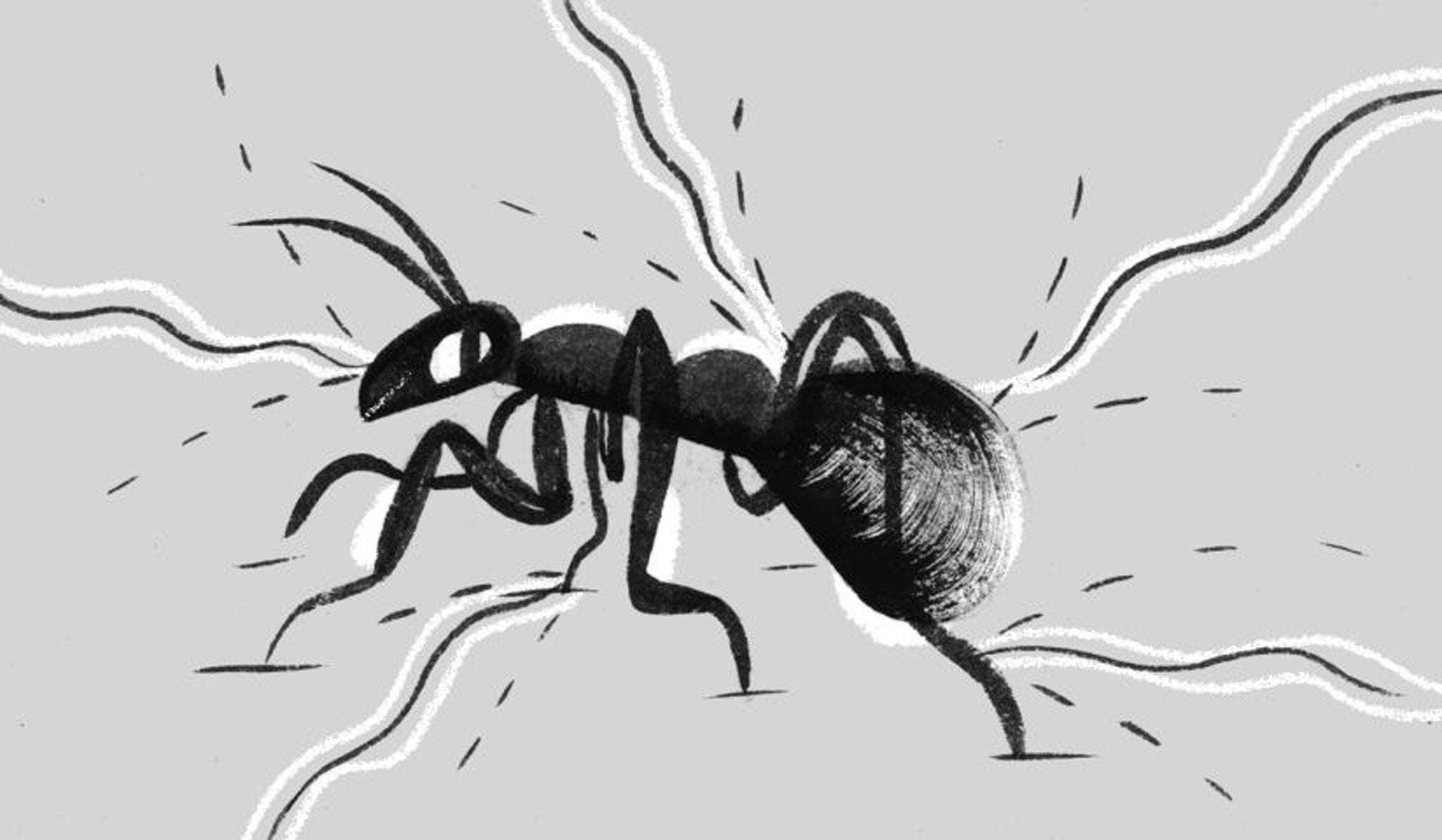Let me ask you this: 'Why don't ants get killed in the microwave?'

A microwave works by passing radio waves at a frequency of 2.45 gigahertz through any food. Radio waves at this frequency have an interesting property: they are absorbed by water and fats. When absorbed, the water or fat molecules start rotating due to the alternating nature of the electric fields of the microwave. This atomic motion is directly converted into energy which is given out as heat.
Now, coming to the question itself. A number of theories were placed. Here are some of them:
1. Ants are too small to be affected by microwaves as the wave lengths of these waves are quite large.
2. Ants contain too little water for them to be affected by the microwave.
3. Chitin (Ants exoskeleton material) will resist microwaves.
Microwave beams are standing wave. Such waves always remain in a constant position. So within a microwave there will be places where the energy density will be very high, whereas in others it will be very low. That is why we always have a turntable within microwave ovens in order to make sure that all parts of a meal are heated.
Ants being relatively small can easily be positioned between these waves, and in the process remain entirely unharmed.
Ants also have another mechanism to their advantage of microwave survival: they have one of the largest body surface areas to volume ratios. This helps it to cool down really fast, so if an ant were caught in a high-energy zone within the microwave, its body surface area advantage helps it to cool down quickly while moving to a low energy zone. So the mighty ant survives some very intense environments.
Someone has done this experiment before: Microwave Tolerance of Ants.
Conclusion: It seems the hypothesis was disproved and ants are able to tolerate a microwave for a relatively high amount of time. One area of interest is whether an ant that is allowed to 'free roam' has a better chance of survival then an ant that stays in one spot.
The reason has to do with the ant's small size and the wave length, which is 12.2cm. The ant is too small to capture sufficient energy to heat. If the wave length was shorter – near the length of the ant – then it would become visible to the microwaves and heat. A box of ants will heat very well and the ants would be killed.
Robert F Schiffmann, microwave scientist
These answers all come from quora.com, the popular online Q&A service. Ask any question and get real answers from people in the know
Join our commenting forum
Join thought-provoking conversations, follow other Independent readers and see their replies
Comments